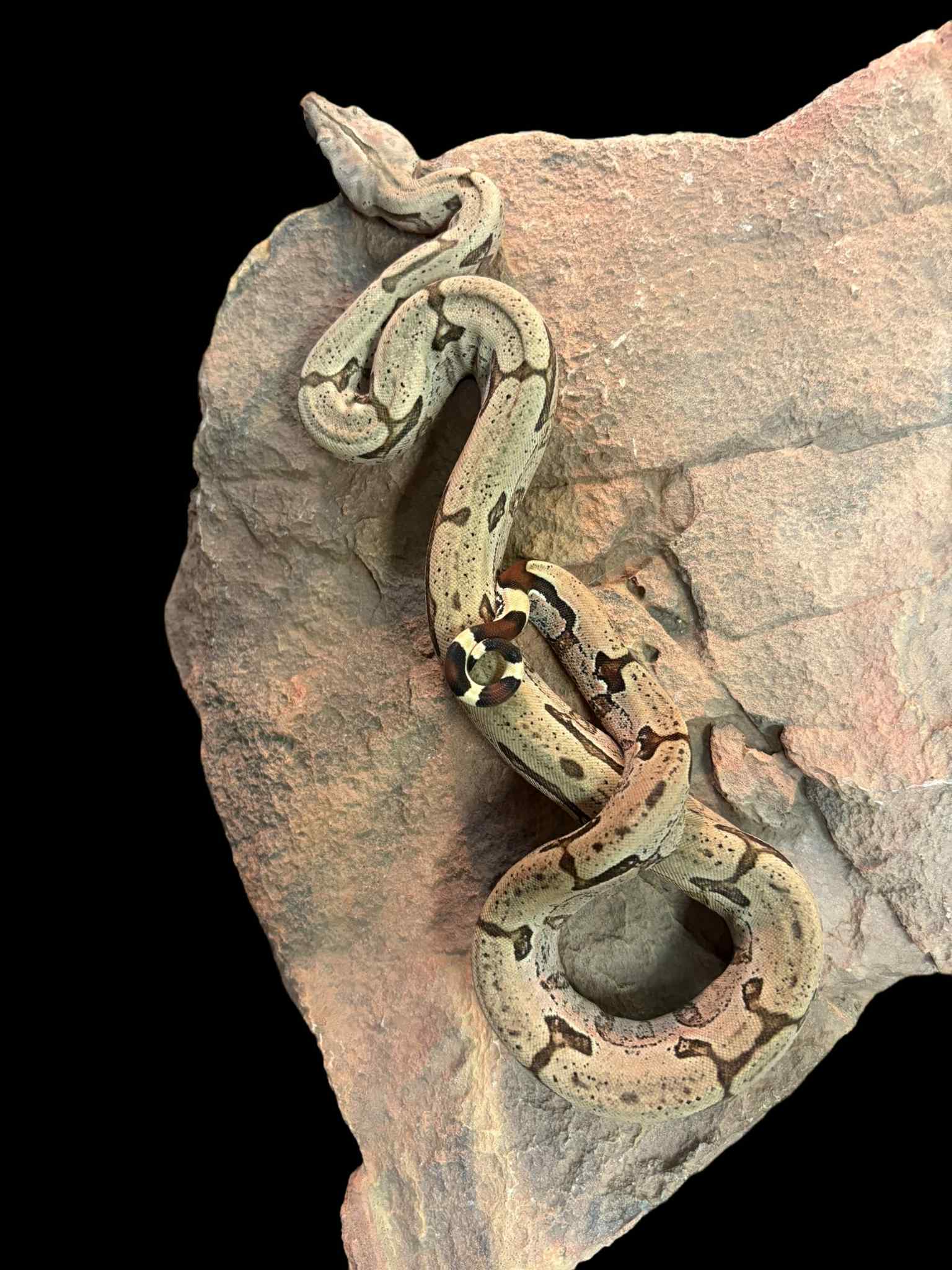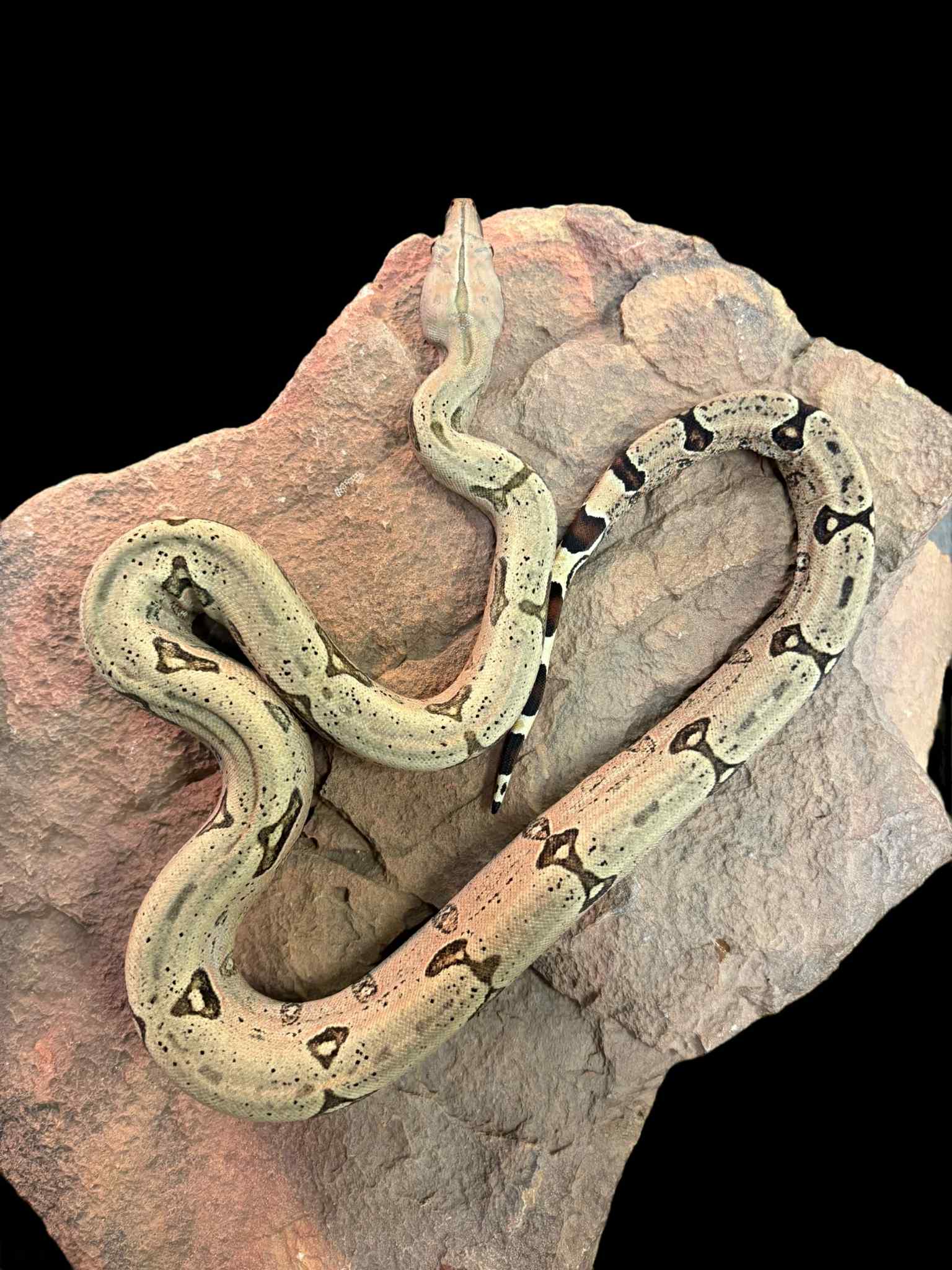Photo Disclaimer
Description
In this case, the photo shown for each animal is of the actual animal in-store. Additional photos will not be provided.
Boa Constrictor Amarali (BCA)
Boa constrictor amarali
Common Name: Bolivian Boa (Normal)
Species Overview
-
Size: Bolivian boas are a dwarf boa subspecies, averaging 4–6 feet (1.2–1.8 m) as adults, with females larger than males. Despite their shorter length, they are stocky and robust.
-
Appearance: Normal Bolivian boas display a light to medium brown base colour with muted saddle patterns that appear blockier than other boas. They typically show minimal red/orange in the tail, favouring an earthy, uniform look.
-
Distribution: Native to Bolivia, primarily in lowland savannahs and highland scrublands.
-
Habitat: Found in dry forests, savannahs, and rocky terrain, adapted to more seasonal and variable climates than tropical boas.
-
Behaviour: Nocturnal ambush predators feeding on small mammals, birds, and reptiles. Juveniles may climb occasionally, but adults are primarily terrestrial.
Captive Care
-
Enclosure: Adults thrive in 4′ × 2′ × 2′ enclosures, though larger is always beneficial. Provide secure hides, cork bark, climbing branches, and foliage. They are more ground-oriented than arboreal.
-
Temperature & Humidity: Maintain a gradient of 78–82°F (25–28°C), with a basking area of 88–90°F (31–32°C). Nighttime drops to 72–75°F (22–24°C) are acceptable. Humidity should be kept around 50–65%, with access to fresh water for drinking and soaking.
-
Diet: Juveniles feed every 7–10 days on small rodents; adults every 14–21 days. With their naturally slower metabolism, feeding should be moderate to prevent obesity.
-
Behaviour in Captivity: Bolivian boas are generally calm and steady, often easier to handle than other boas once established. They may show strong feeding responses but typically settle into manageable animals.
-
Special Considerations: While selective breeding has produced many morphs in other boa subspecies, Bolivian boas are most often kept in their pure form.
Locality Note
The Bolivian boa (Boa constrictor amarali) is a true dwarf boa distinct from Boa constrictor imperator. They are valued for their shorter adult size, heavy-bodied frame, and muted earthy tones. Maintaining pure Bolivian bloodlines is important within the hobby due to their rarity and unique characteristics.


